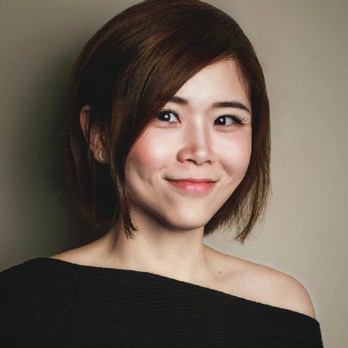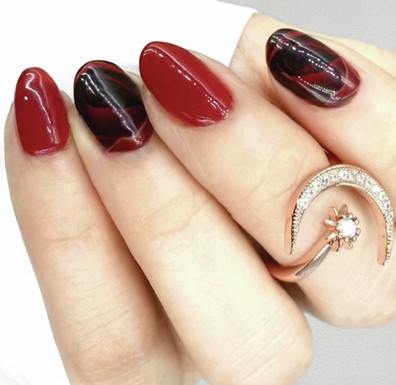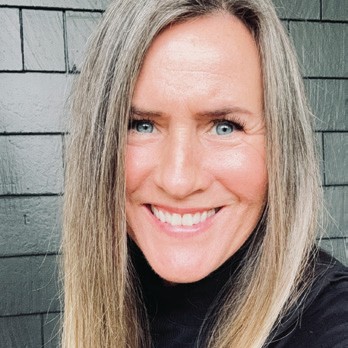TECH FOR TECHS
Is technology taking over job roles?
REBECCA HITCHON gets the scoop on high-tech launches, decodes hot topics & sources tech-savvy tips for your business
You’ve probably seen the headlines: ‘AI could replace the equivalent of 300 million jobs’ (BBC, 2023) and likely felt the fear that technology could do certain jobs faster, and perhaps more precisely, than humans. As a journalist, talk of technology replacing my work is nothing new. When artificial intelligence chatbots like ChatGPT first began to develop, I’ll admit that I was nervous about what the future would look like. Now, I have a very different perspective. After using these tools, I know that technology can’t imitate my passion, personability and industry understanding, and the content it produces needs heavy editing and fact-checking. But I won’t deny myself of technology’s benefits, so you can find me using ChatGPT to learn what’s trending and generate catchy phrasing to support my work.
For beauty pros, the impacts of technology on your work seems to have become more discussed in recent years, as innovations have developed. But is there reason for you to fear, or can technology work alongside your role and support you? I talked to two technology companies behind AI-powered beauty machines to find out.
Umia
Six years ago, the idea for the Umia AI manicure studio was sparked, with an aim to make beautiful nails more accessible for consumers, in terms of time and cost. However, as its founders researched the nail market, they discovered common pressures faced by professionals – and saw an opportunity to alleviate them.
“Nail technicians often endure long working hours, plus back and neck strain, which take their toll,” says Modi Liu, co-founder of Umia. “While nail artists craft intricate, original designs, these may be created less than a handful of times, and can’t be delivered to fans on the other side of the world. Although the creativity of nail artists gets celebrated, compensation doesn’t always reflect that.”

Modi Liu
This is where Umia can help. “Umia isn’t here to replace nail professionals; it’s here to work with them,” stresses Modi. “By automating the most time-consuming steps of the nail process, we allow technicians to work more comfortably and efficiently, and serve more clients without added strain. Pros can focus on what they do best: connecting, creating and elevating the client experience. The Umia team has also produced a platform for artists to share their creativity, help them increase their reach and be rewarded for their creations.” Every time a client selects a nail design via Umia’s system, the artist behind it receives payment.

“Think of the fashion industry: the rise of industrial sewing machines didn’t diminish the role of designers or seamstresses – it gave them new tools to reach more people, express their vision and elevate style,” Modi continues. “In the same way, Umia is here to share the art of nails with more fingertips. Our goal is to spread the love of nailcare to more people globally, which means growing the market by creating new customers, more demand and greater opportunities for everyone in the industry.”
If nail professionals want to learn more about the Umia manicure studio, Modi encourages them to get in touch. “We are actively recruiting nail artists to join our community via www.umia.beauty/artist, and can book demos for those looking to lease or buy a unit. Simply email info@umia.ca.”
www.umia.beauty
@umia.beauty
@umia.beauty
LUUM
Described as a ‘high-tech meets high-touch’ solution for lash artistry, LUUM uses an AI-powered robot to apply lash extensions. From its inception in 2017, the US brand’s goal has been to elevate the lash experience for professionals and clients. It launched its first commercial pilot with Ulta Beauty in 2023, then a second with Nordstrom last year.

Jo Lawson
Jo Lawson, LUUM CEO, tells Scratch: “Our robot uses computer vision and machine learning to delicately isolate and apply lash extensions. Its lash applicator tools are soft and flexible, eliminating the risk of accidental scratches or pokes. The robot is also designed to never reach past a client’s natural eyelashes.
Clients often describe it as feeling like ‘butterfly kisses’. Each service is led by a licenced lash artist, who carries out a consultation, prep procedures and finishing touches.”
This year, LUUM introduced its next-generation lash robot, which can apply lash extensions to both eyes simultaneously, completing a full set in 33 minutes. This is more than twice as fast as LUUM’s original 75-minute service time. “The robot allows lash artists to accommodate three times as many clients per day, boosting their capacity and potential earnings,” says Jo. “LUUM’s approach also significantly reduces the time lash artists spend in strained positions, which can lead to back and neck pain.”
She continues: “We see artificial intelligence as a tool that elevates human artistry: not one that threatens it. Our robot doesn’t replace lash artists – it handles the most tedious and physically demanding parts of the service, allowing professionals to focus on guiding the client experience, shaping the desired lash look and adding finishing touches. As the demand for premium, time-efficient services continues to grow, embracing technology is one of the smartest ways beauty professionals can stay ahead.”
One of LUUM’s priorities is to provide comprehensive training to lash artists who use the brand’s technology. “This not only covers the proper use of the robot, but emphasises the importance of high industry standards, as well as individual consultation and artistry,” notes Jo.
LUUM’s robot can be found in select US retailers and is currently unavailable for independent salon installation, but the brand has plans to expand. Receive future updates about LUUM by emailing info@luumlash.com.
www.luumlash.com
/luumlash
@luumlash
@lashesbyluum
NEWS BYTE
e.l.f Beauty partnered with Pinterest to launch an AI-powered colour analysis tool in June, named Color e.l.f.nalysis. It is designed to make it easier for consumers to find their ideal make-up shades, and leads them to a tailored Pinterest board of shoppable e.l.f. Beauty products. Users upload a selfie and the tool analyses their skin hue (warm or cool), value (light or deep contrast) and chroma (bright or muted).
“Color e.l.f.nalysis is about breaking down beauty barriers and making personalised colour analysis accessible to every eye, lip and face – for free,” said Patrick O’Keefe, chief integrated marketing communications officer at e.l.f. Beauty. “This tool complements – not replaces – the human touch.”
“As the demand for premium, time-efficient services continues to grow, embracing technology is one of the smartest ways beauty professionals can stay ahead.”
NEWS BYTE
Experts at Chapman University, California, have developed an AI-powered mobile app that informs users they could have anaemia, via a selfie of their nails. Anaemia affects nearly two billion people globally and occurs when a person has low levels of red blood cells to carry oxygen throughout the body. Until now, detection has required blood tests.
The app is not a replacement for medical tests, but serves as a warning system, so that users know when to consult a doctor. It has helped over 200,000 users across the US and conducted over a million tests as part of a medical study.
NEWS BYTE
Meta’s artificial intelligence assistant, Meta AI, reached one billion monthly active users in May. Meta, which owns Facebook, Instagram and WhatsApp, has projected that its generative AI products could produce a revenue of $460 billion to $1.4 trillion by 2035.
“Think of the fashion industry: the rise of industrial sewing machines didn’t diminish the role of designers or seamstresses – it gave them new tools to reach more people, express their vision and elevate style.”